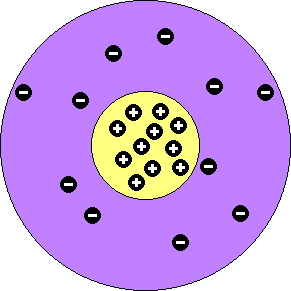Rutherford's Theory
Background Information
Lived during 1871 to 1937, was a student of Thompson.
Another British scientist also received a Nobel Prize, but one for chemistry, for his parent- daughter (atomic transmutation) theory.
Became the first person to “break up” the nucleus of an atom.
Experimentation
Rutherford based his theories on the results of experiments, which was called the Rutherford scattering experiments. He bombarded thin sheets of gold with alpha particles. Most of the particles passed through the sheets, which showed that the gold atoms must consist of mainly empty space. BUT some particles bounced back as if they had hit something solid.
Rutherford concluded that these particles had been reflected by a strong force from the tiny but heavy nucleus of the atom.
Rutherford’s Theory
Established his nucleus model of an atom in 1911.
He compared the atom to the solar system, with a heavy part, the nucleus, forming the centre of the atom, and particles negative electricity, called electrons, forming the outer part most of which consisted of empty space.
He declared that nearly all the mass of an atom is concentrated in a tiny nucleus, and that the nucleus is surrounded by electrons travelling at tremendous speeds through the atoms outer regions.
He did not explain the arrangement of the electrons in atoms.

Rutherford's Atom Model
Rutherford's Experimentation.
His scattering experiments and his conclusions.
